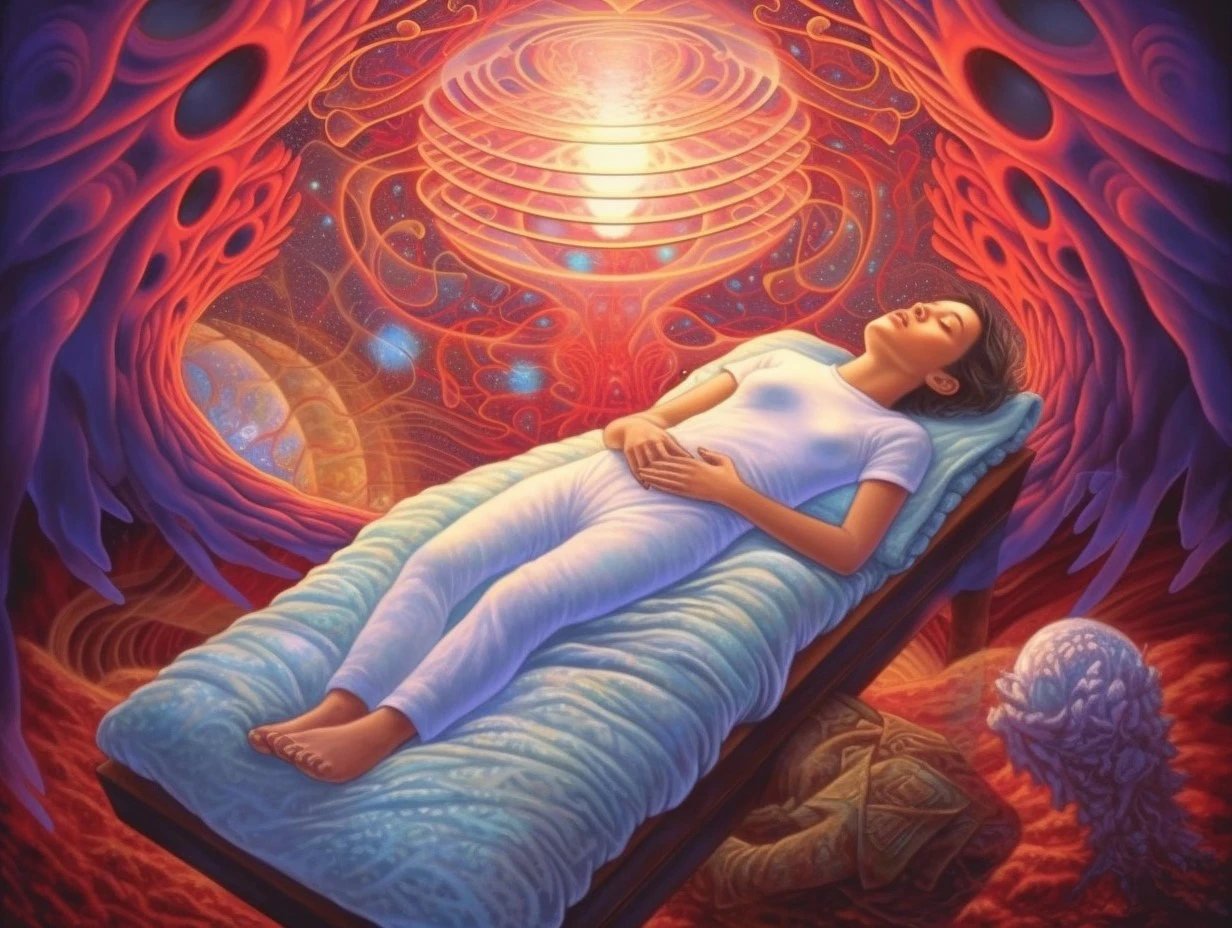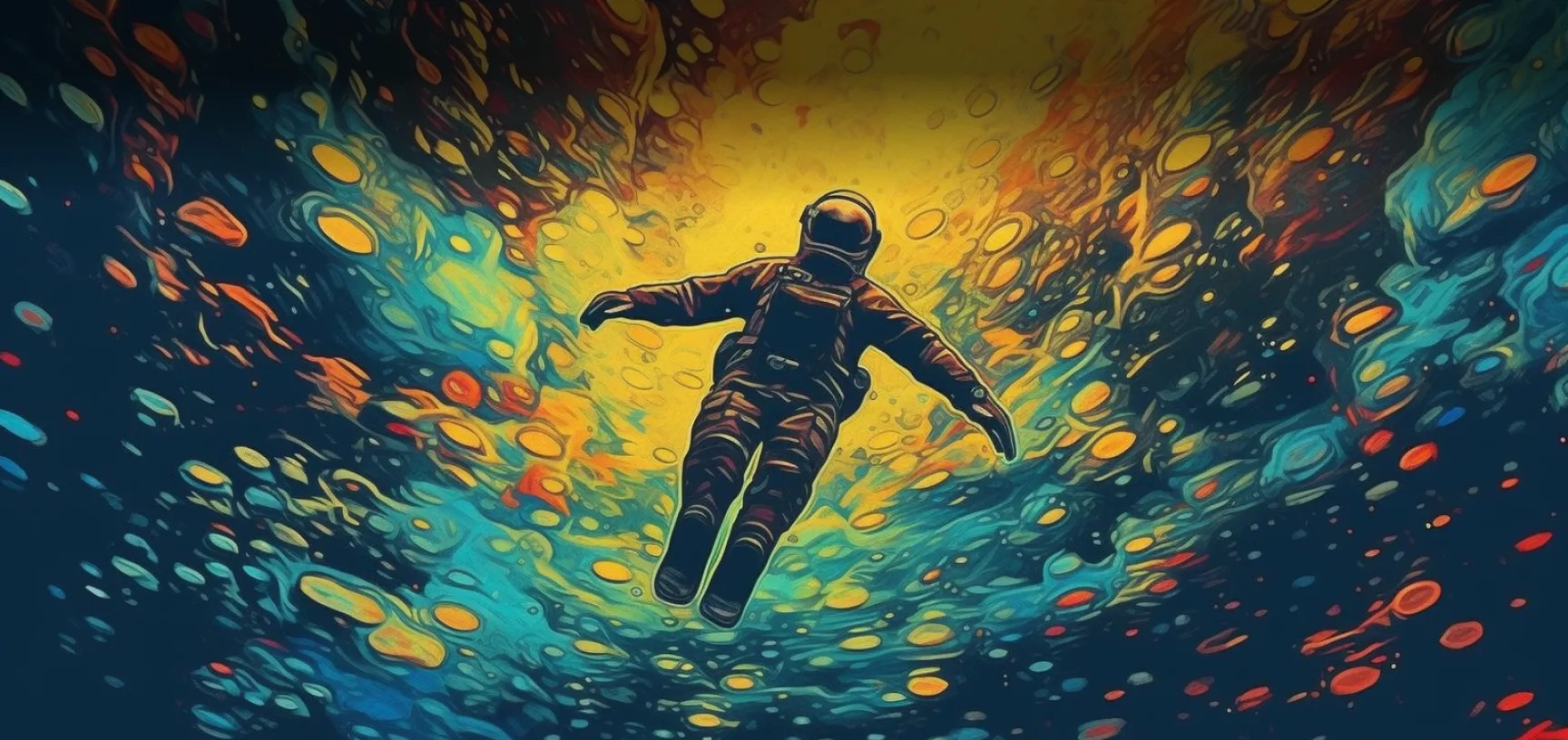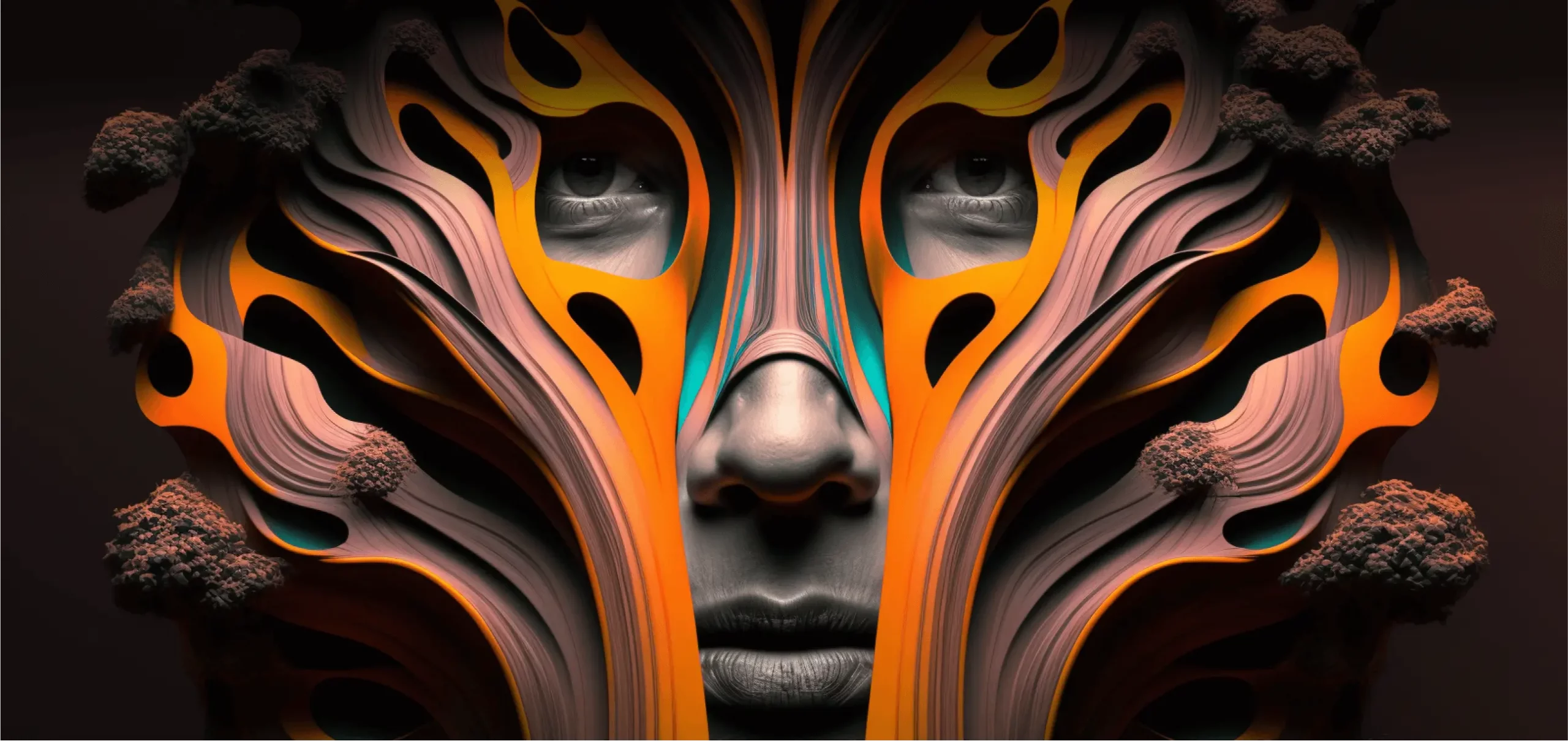The first deep sea dive ever occurred in 1930 when a pair of explorers took the big plunge in a submersible called the Bathysphere (a somewhat silly name that sounds like it could have been dreamed up amidst a mushroom trip). Thirty-one years later, a Soviet cosmonaut became the first human to fly beyond Earth’s atmosphere (though he was beaten there by a smattering of test monkeys, dogs, mice, rats, and rabbits). Now, studies are expanding our ability to venture into a new realm. One that we understand less than the deepest points of the Marianas Trench or the most expansive reaches of the Milky Way: the DMT space.
In a recent study out of Imperial College London, results indicate that prolonged exploration of the DMT experience–and the kaleidoscopic landscapes it conjures–is both achievable and safe. More studies are underway to build upon these findings, but suffice it to say that we’re entering into a new frontier that extends into landscapes that are further and weirder than anything encountered by Captain Kirk.
Sorry, Captain, but nothing is final when DMT comes into play.
I spoke with one of the paper’s co-authors, Lisa Luan of the Imperial College Centre for Psychedelic Research, to learn more about the study and what comes next in the quest to better understand DMT, cartographize wherever it brings us, and hopefully discover once and for all the truth about the “beings” or “entities” one encounters while visiting.
Keep Up with Uncensored Psychedelic Trends
Join our newsletter at Psychedelics Uncensored.
We respect and protect your privacy. By subscribing your info will be subject to our privacy policy . Unsubscribe easily at any time
Extended Visits to the DMT World
“A big motivation on our side was the hope to be able to explore and make sense of the DMT experience in more detail, both on a phenomenological level as well as on a brain and neurophysiological level.”
Various studies have signaled that the typical brief DMT experience lasting ten minutes or so—and for our purposes here, we’re talking pure DMT, not that associated with ayahuasca—has the potential to treat depression, impart mystical experiences (with the attendant benefits that accompany that), and possibly even help with stroke recovery. So why prolong that experience?

“DMT is such an overwhelmingly powerful yet short-acting substance,” explained Luan. “When ingested through smoking or vaporizing—which is the most common form of use seen recreationally—the effects peak within two to five minutes, and during the peak, people report vivid visual effects and a feeling of being immersed in a different realm or space. Oftentimes people forget about time and their own identities, and sometimes there is even a strange sense of familiarity as well as the sense of encountering some form of other sentience or being.
“But the nature of DMT means that these effects subside as fast as they appear, and people are left with these mind-blowing experiences that are so fascinating and yet so hard to make sense of. And exploring this realm of DMT in closer detail—having more time to settle into the experience and having a chance to engage with whatever is happening—are motivations that a lot of our study participants reported. Similarly, a big motivation on our side was the hope to be able to explore and make sense of the DMT experience in more detail, both on a phenomenological level as well as on a brain and neurophysiological level.”
To test extended DMT exposure, Luan and her team “took DMT plasma concentration data that we had collected from a previous study using what is called bolus injections of DMT to build an infusion model with dosing parameters that would keep an individual at steady plasma DMT levels over an extended time of thirty minutes.”
Essentially, the team kept the subjects in the journey for longer than the typical, relatively short (20 minutes) blast off and come down experience.
“We chose four doses of different concentration levels and tested them in a sample of eleven healthy volunteers,” Luan explains. “Each volunteer came in for one placebo dosing session and up to four DMT dosing sessions, during which we administered the infusion over thirty minutes, took blood samples, and recorded their brain activity. We also asked participants to rate several aspects of their experience over time, with some of these ratings being collected while they were tripping and others retrospectively. Finally, after the end of the infusion, we collected detailed descriptions of participants’ experiences using an approach called micro-phenomenological interviewing.”
Keep Up with Psychedelic Trends
Get uncensored psychedelic news, events, and updates. Join Psychedelics Uncensored!
We respect and protect your privacy. By subscribing your info will be subject to our privacy policy . Unsubscribe easily at any time
As it turned out, “continuous IV infusions are indeed effective at extending the DMT experience in a safe, tolerable, and stable fashion over time. Our method plateaued the peak effects into a steady state over the duration of the infusion. Participants experienced low levels of transient anxiety shortly before the beginning of the infusion, which dissipated as they settled into the experience. As expected, higher doses of DMT led to stronger subjective effects.”

These effects were fairly uniform across the participants.
According to Luan, “Most if not all saw complex geometries with closed eyes which increased in dimensionality until there was a sense of having entered an alternate ‘space.’ Sometimes, this was accompanied with a strange sense of familiarity, and sometimes participants described the feeling of encounter with some form of sentient being or presence. Beyond that, experiences were quite varied. Some participants experienced moments of insight, others moments of confusion. Sometimes there were personal and emotional experiences. But in order to identify potential common themes, if there are any, we will have to go back and look at the interviews that we conducted with the participants.”
“I wonder whether DMT somehow attunes us to the patterns and processes of life that are always happening around and inside us that we are just usually not aware of.”
Renowned DMT researcher Dr. Rick Strassman seems optimistic about the study’s findings and the potential benefits of prolonged DMT immersion.
“It’s promising,” he said. “One could more leisurely explore the space. In addition, the level of intensity could be tailored to the clinical situation. For example, if one wanted to go deeper the infusion rate could be increased, and vice versa if one wanted to integrate, talk with a therapist, etc.”
This tailoring potential, says Luan, could make DMT a more practical tool for clinical therapy. Other classic psychedelics like LSD or psilocybin require many hours of consciousness alteration, whereas DMT infusions—which allow clinicians to control dosage with ease—might offer the opportunity to adjust duration and intensity to suit an individual’s needs.
And according to Luan, this study is only the beginning.
“These are just the initial findings,” she said. “We still have a lot more data to look into and analyze. We are currently completing a neurophenomenological study on a larger sample of participants using this new extended DMT approach to get a better idea of what is happening on an experiential and also on a neurophysiological level during these experiences. Additionally, we have several exciting studies involving DMT and extended infusions that we are hoping to launch in the near future.”
Blazing the Trail

Luan and the team at Imperial aren’t alone in their quest into the DMT realm. The University of Greenwich has been exploring the content of the space, while a number of private organizations have begun delving into DMT psychonautics.
There is much debate among the psychedelic community as to whether the DMT space and entities are “real” or psychological projections of some sort.
“I think it’s fascinating that these entity experiences happen so often with DMT,” said Luan, “and that there is oftentimes a strong sense of being in an alternate space that feels both fantastical and real. There are many theories out there on DMT entities and the DMT landscape in general, involving spiritual worlds and divine contact, the collective unconscious, the brain as the creator of all experience, cultural memes, and even alien contact. I remain agnostic and as a neuroscientist try to look for explanations in the brain and its activity.”
She does admit, however, that her curiosity extends beyond neurology.
“Personally,” Luan revealed, “I wonder whether DMT somehow attunes us to the patterns and processes of life that are always happening around and inside us that we are just usually not aware of.”
This material is not intended as a replacement or substitute for any legal or medical advice. Always consult a medical professional about your health needs. Psychedelics are widely illegal in the United States, and readers should always be informed about local, state, and federal regulations regarding psychedelics or other drugs.

 Nick Hilden
Nick Hilden

 David Connell
David Connell